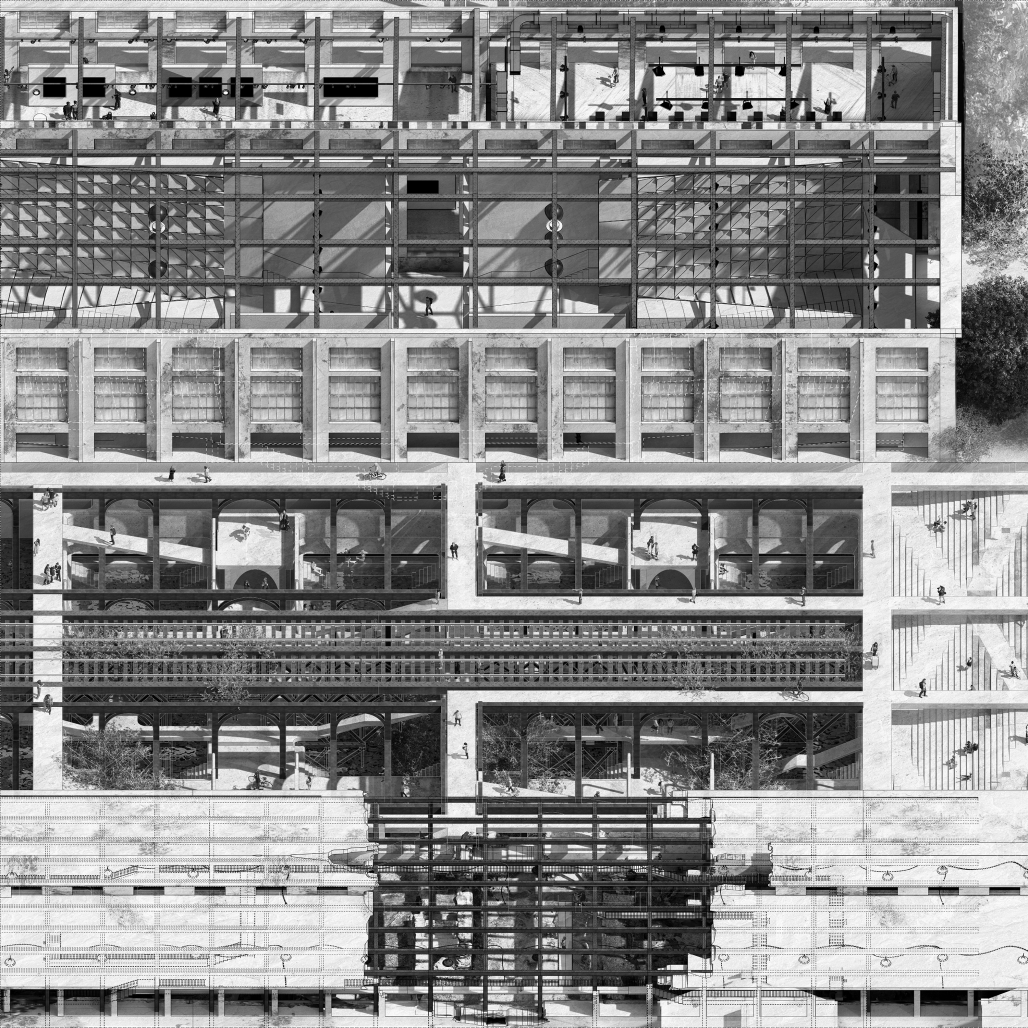In the vibrant pulse of urban hubs, where progress resonates ceaselessly and industries venture into new territories, a global challenge emerges, enveloping abandoned industrial sites. Within the streets of Bello, a municipality on the outskirts of Medellín, time reveals itself as a relentless architect, erasing its remnants with every crumbling structure, turning the city into a transient landscape full of ruins and shadows of the past, where stories are etched and inevitably fade away.
The passage of time has seen Medellín, the capital of Antioquia, evolve into a symbol of progress in Colombia since the late 19th century, with significant advancements in services and infrastructure. However, much of this progress has come at the cost of demolishing heritage sites in the name of modernization. In Antioquia, this erroneous concept of progress has devastated the cultural and heritage wealth of Medellín's downtown, resulting in the loss of its iconic status as a historic center and transforming it into an eclectic city. The city's limited land for construction and expansion has led to a cycle of building, demolition, and reconstruction, prioritizing short-term changes. It is crucial to reassess the approach to preserving the remaining heritage in the complex context of a modern Latin American city in constant evolution. Balancing progress with the protection of the city's cultural identity becomes imperative to ensure that future development respects and values Medellín's inherited legacy.
The Antioquia Railway and its stations represent one of the most significant heritage ensembles in the state. Although its construction faced significant challenges due to the region's difficult geography and the adaptation of its inhabitants, its impact on the region's development was notable. However, despite its historical importance, many railway stations have been abandoned due to the arrival of new technologies such as the metro, allowing nature and humanity to find an unexpected way of renewal: where once shadows loomed, now flourish vibrant flora, new ecosystems take root, and both human and non-human life reclaim the space.
Preserving and repurposing the Bello Workshops reflect the acknowledgment of their historical and educational value. These spaces, once vocational training centers, still hold potential as environments for modern learning and education in an area where existing facilities struggle to cope with the high growth of the informal population. Keeping these workshops alive aims not only to continue the educational tradition but also to revive collective memory, integrating it into the urban landscape. By incorporating this industrial heritage, a dynamic link between the past and present enriches the local community's identity and experience.
"Building the Void" conceptually underscores the importance of empty space in architectural design, considering negative space as integral to the composition. This approach aims to create a balance between structure and void, enhancing spatial experience. The project features different types of voids, within the workshops and intermediate spaces, integrated to create a richer and more meaningful environment.
The complex, situated above the Antioquia railway, is flanked by two significant streams, each preserving its space alongside the railway. However, there is a risk of water stagnation due to the gentle slope towards the river. To manage rainwater in urban areas sustainably, a rain garden is proposed as part of the project. This green infrastructure captures and filters rainwater, reducing floods and recharging groundwater aquifers. By mimicking natural water cycles, rain gardens contrast with the impermeable surfaces typical of Bello municipality, reducing strain on conventional sewer systems and minimizing flooding risks.
The project emerges as a series of elements that link the present to the past both spatially and materially. The creation of a centralized hub for various types of interactions at the municipality's entrance allows for a range of dynamics and activities, where the landscape serves as the main stage, constantly evolving over time. Additionally, the construction's resilience against nature and its evolution ensures a new perspective on the role of heritage and its potential resilience to change.
2023
The project proposes the first stage of a long-term system that may be expanden. Nave 1, dedicated to the contemplation of industrial ruins. Nave 2 consists of a gallery and an open-air theater, and finally, the main SUD serves as the unifying element of the two naves, receiving water from the entire project. A series of structural steel additions have been incorporated into the existing walls, carefully designed to preserve the historical legacy of the complex. This ensures that the walls remain the focal point of the landscape, enduring the passage of time.
Nave 1 focuses on creating a new type of intermediate landscape between the existing industrial ruin, which transforms into a floodable and permeable artificial ruin, and the permanent view of Medellín as a context. The pathways allow for passive and reflective immersion in the landscape, facilitating the contemplation of time passing in this renewed environment.
Nave 2 focuses on more traditional cultural uses. A double open-space theater is proposed, designed to be versatile for various activities of different scales. This is complemented by a gallery that, in its initial conception, consists of an adaptable open space for different types of exhibitions and a closed section mainly intended for digital and immersive art projects.
The Sustainable Urban Drainage System (SUDS) emerges as the unifying element between the two naves, functioning as an immersive public space landscape, which can be used as nature grows and time takes hold of it. It is distinguished by its complete permeability, seamlessly integrating with the abandoned rails present in the area. The space offers areas for passive enjoyment as well as a series of predetermined routes that encourage people to explore the area and interact gradually with the emerging green landscape.
Design: Sofia Prado
Tutors: Daniela Atencio, Claudio Rossi, Daniel Bonilla
Favorited 2 times




















